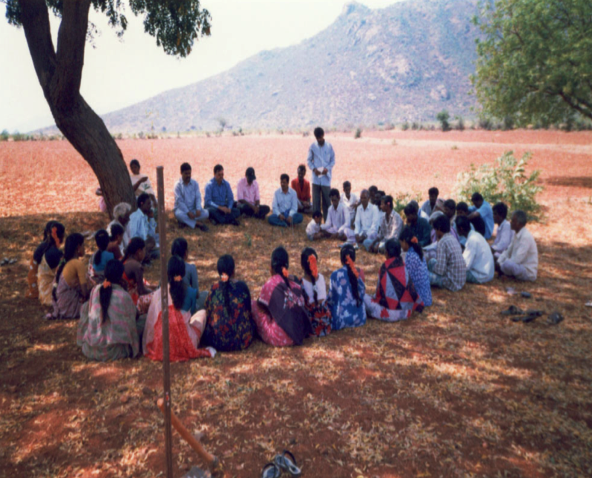
|
|
Major Areas :: Watershed Management :: Integrated Wasteland Development Programme |
|
Integrated Wasteland Development Programme
Watershed is defined as a hydro-geological unit of area from which
the rainwater drains through a single outlet. Watershed development
refers to the conservation, regeneration and judicious use of all the
natural resources (like land, water, plants, animals) by human beings.
Watershed Management brings about the best possible balance between
natural resources on the one side and human beings on the other. Human
beings and the ecology are interdependent. The changes in the
environment directly affect the lives of the people depending on it. A History of Evolution of Watershed Concepts In order to combat the frequent recurrence of drought in the States, Drought Prone Area Programme (DPAP) was introduced during the year 1975, as a Centrally Sponsored Scheme (CSS) with matching state share of 50:50 and adopted the watershed approach in 1987. The Drought Prone Area Programme concentrated on non-arable lands. Drainage lines for in-situ soil and moisture conservation, agro-forestry, pasture development, horticulture and alternate land use were its main components. Integrated Wasteland Development Programme (IWDP) was introduced during 1992 with 100% Central assistance. The Integrated Wasteland Development Programme made afforestation and soil & moisture conservation in waste lands under Government or community or private control as its predominant activity, without much focus on saturation of complete micro watershed and participation of people. The programmes of dry land development in Andhra Pradesh have undergone a major change from 1995-96 with the introduction of new watershed guidelines, based on the recommendations of Dr. Ch. Hanumantha Rao’s Committee Report. Integrated approach and total participation of village communities are the main features of these guidelines. All the area development programmes like DPAP, IWDP and Desert Development Programme (DDP) were implemented through these new guidelines. Though the focus of these programmes is different, their common basic objective is land and water resource management for sustainable production. The term ‘watershed-plus’ emerged in 1998 to adopt new approaches in watershed projects that would step beyond the usual boundaries in order to address the needs of marginalized groups of people, such as those with no land, women and the poorest of the community. Hariyali guidelines were issued in 2003-04 for implementation of watersheds through Gram Panchayats. Under these guidelines, the Grama Panchayats were vested with the total responsibility of Implementation of watershed programmes. However the role of SHGs and UG remained the same as earlier. New Guidelines for Integrated Watershed Management Programme (IWMP): Government of India issued New Common Guidelines for Watershed Development Projects in the year 2008. The salient features of these guidelines are as following.
|
|
| Home | Seasons & Varieties | Tillage | Nutrient Management | Irrigation Management | Weed Management | Crop Protection | Cost of Cultivation | Disclaimer © All Rights Reserved. TNAU-2016. |
|
